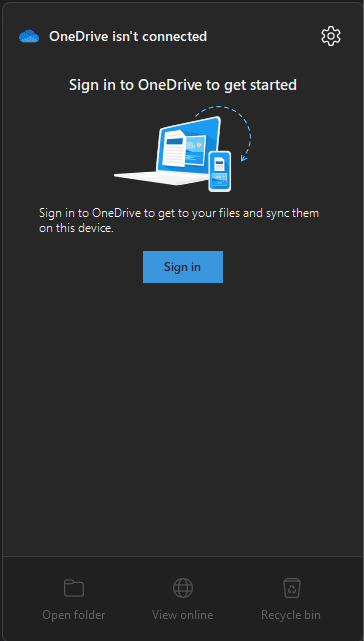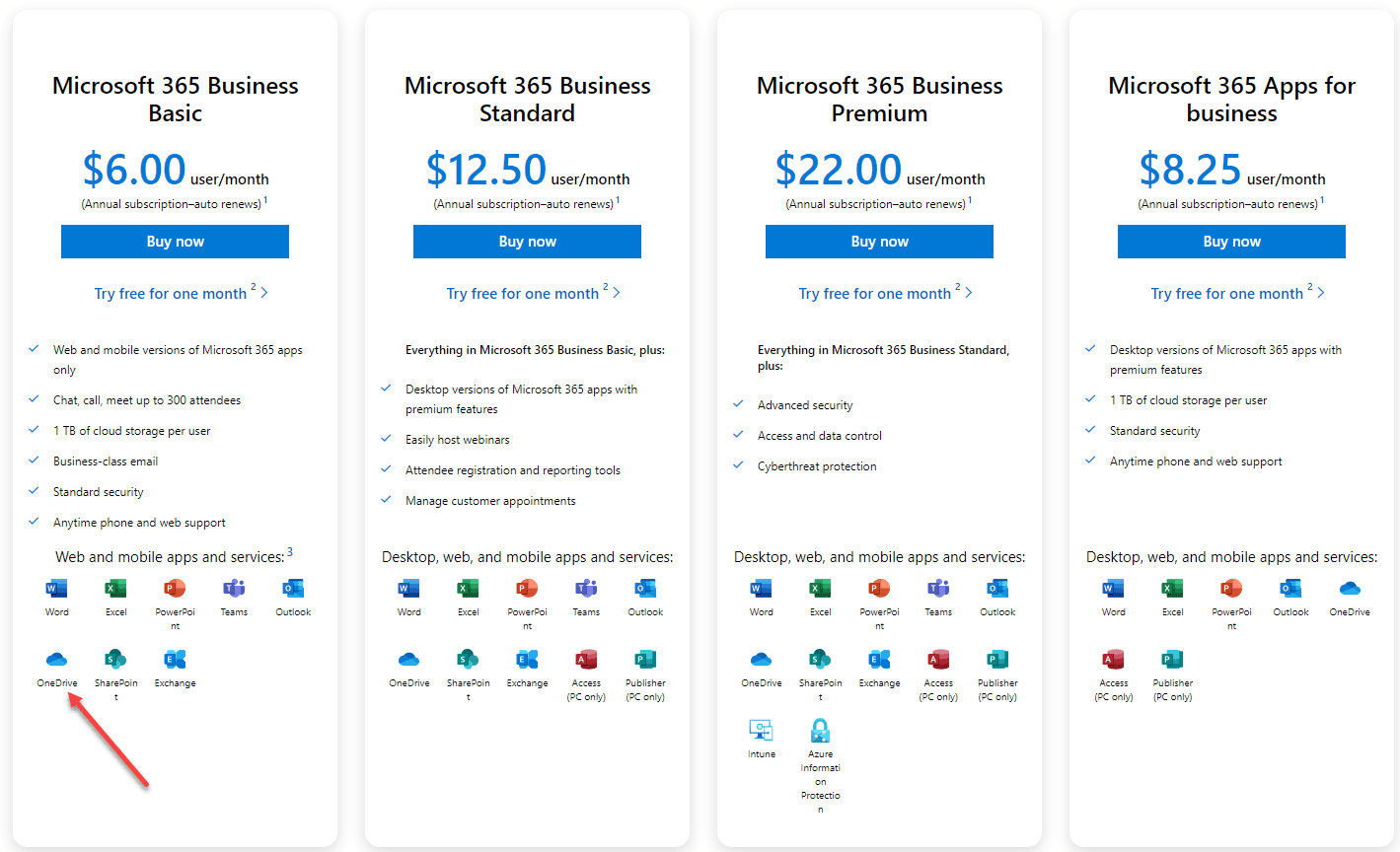Read on
Microsoft 365 for Beginners – Introduction to Cloud Computing – Part 1
Microsoft 365 for Beginners – Introduction to Microsoft Azure Cloud Services – Part 2
Microsoft 365 for Beginners – Microsoft 365 Licensing Options – Part 3
Microsoft 365 for Beginners – What is Exchange Online – Part 4
Microsoft 365 for Beginners – What is Sharepoint Online – Part 5
Many businesses have shifted from on-premises file storage to the cloud. If you’re new to cloud storage and collaboration, Microsoft 365 OneDrive for Business is a fantastic tool to help streamline your workflow and increase productivity. It provides a powerful platform for seamless integration with the suite of Microsoft 365 applications, provides security and compliance benefits, and is natively integrated with the Microsoft Windows operating system. Let’s look at Microsoft 365 OneDrive for Business and see how you can get the most out of the platform.
What is Microsoft 365 OneDrive for Business?
Microsoft 365 OneDrive for Business is a cloud-based storage solution that provides a secure and centralized location for storing, sharing, and collaborating on files. It’s accessible from any device with an internet connection, ensuring that your team can access the resources they need whenever and wherever they need them. It’s also deeply integrated with other Microsoft 365 applications like Word, Excel, and PowerPoint, allowing seamless collaboration and file management across your organization.
You can visit the official Microsoft OneDrive for Business site here: OneDrive for Business (microsoft.com)

Why Choose Microsoft OneDrive for Business?
Microsoft OneDrive for Business stands out among cloud storage solutions for several reasons, making it an attractive choice for businesses looking to optimize their file management and collaboration processes. One of the key advantages of OneDrive for Business is its seamless integration with the Microsoft 365 suite of applications.
Your team can efficiently work on Word, Excel, and PowerPoint files directly within OneDrive, fostering better collaboration and streamlining workflows. In addition, integration with Microsoft Teams enhances communication and project management, allowing users to share and collaborate on files within team conversations and meetings.

Another compelling reason to choose OneDrive for Business is its robust security and compliance features. Microsoft invests heavily in ensuring your data is secure in transit and at rest. With features such as encryption, multi-factor authentication, and advanced threat protection, you can have peace of mind knowing that your sensitive files are protected.
Furthermore, OneDrive for Business complies with industry-specific regulations, including GDPR, HIPAA, and FERPA, which are critical for organizations operating in regulated industries.
Getting Started with OneDrive for Business
Let’s look at a few tasks to get started with OneDrive for Business. Note the following:
- Sign Up and Set Up
- Uploading and organizing files
- Sharing files and collaborating
- Version history and file recovery
- Integration with Microsoft 365 apps
1. Sign Up and Set Up
To start using OneDrive for Business, you’ll need a Microsoft 365 subscription that includes it. If you’re not already subscribed, you can choose from various plans to find the one that best suits your business needs. Once you have your subscription, sign in to your Microsoft 365 account and click on the OneDrive icon in the app launcher to access your OneDrive.

2. Uploading and Organizing Files
You can easily upload files to OneDrive for Business by dragging and dropping them into the web interface or using the “Upload” button. You can also create folders to organize your files, making them easier to locate and manage. Additionally, you can sync your local files to OneDrive using the OneDrive sync client, which keeps your files up-to-date across all your devices.
3. Sharing Files and Collaborating
OneDrive for Business makes sharing files with your colleagues or external partners simple. Just right-click on the file you want to share, select “Share,” and enter the email address of the person you’d like to share it with. You can also set permissions, such as whether the recipient can edit or only view the file. In addition, the real-time collaboration feature in OneDrive for Business allows multiple users to work on the same document simultaneously, with changes being saved automatically and updated in real-time.
4. Version History and File Recovery
OneDrive for Business keeps track of file versions, so you can easily restore a previous version of a file if needed. This is particularly useful in cases where a file was accidentally deleted or overwritten. To access the version history, right-click on the file, and select “Version history.” From there, you can view and restore previous versions.
5. Integration with Microsoft 365 Apps
It integrates seamlessly with other Microsoft 365 apps like Word, Excel, PowerPoint, and Teams. You can open, edit, and save documents directly from OneDrive without downloading them to your local device. Plus, you can collaborate on these files in real time with your colleagues, making it easier than ever to work together.
Best Practices for Using OneDrive for Business
Like any solution, there are best practices to help get the most out of the solution and ensure users can leverage it efficiently.
- Organize Your Files – To keep your OneDrive for Business clean and easy to navigate, create a logical folder structure and organize your files accordingly. It will make it easier for you and your team to find the files you need quickly
- Use File Naming Conventions – A consistent file naming convention helps ensure your files are easily searchable and identifiable. Include relevant information such as project names, dates, or version numbers in your file names
- Review and archive your files – Regularly review your files and folders in OneDrive for Business to ensure they’re up-to-date and relevant. Archive or delete files no longer needed to maintain a clutter-free and organized storage space
- Set Permissions and Monitor Sharing – Be cautious when setting permissions for shared files, and only grant edit access to those who require it. In addition, regularly review and update sharing permissions to ensure that sensitive files remain secure and accessible only to authorized users
- Take Advantage of Built-in Collaboration Tools – Make the most of the collaboration features available in OneDrive for Business, such as co-authoring, comments, and real-time editing. These tools can significantly improve communication and efficiency within your team
- Train Your Team – Ensure your team is familiar with OneDrive for Business and its features. Provide training and resources to help them understand how to use the platform effectively and securely
Wrapping up
Microsoft 365 OneDrive for Business is an excellent solution for storing business-critical files and folders. It provides an easy way to share resources across your organization and collaborate effectively and efficiently. By understanding its features and following best practices, you can optimize your experience and get the most out of its cloud-native platform. As a result, it enables businesses to streamline their workflows and enhance collaboration within their teams.
Follow our Twitter and Facebook feeds for new releases, updates, insightful posts and more.



Leave A Comment